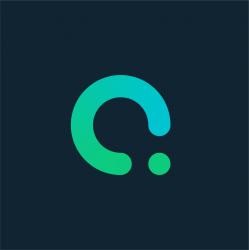We have already traveled the intense, vibrant, obstacle-filled, and exciting road from the moment an idea appears in our head until it is materialized. Far from having reached the end of the road, a new set of challenges loom on the horizon: to give life to the project, to position it, to create a narrative, to get the funding necessary to ensure its consolidation.
It is vital to offer something innovative and different. How do you build what is known as “competitive advantage”? “It’s not about intuition, technology, or the product itself; it’s about doing less of what we can do and more of what we should do,” explains Tim Sutton, a brand strategist with extensive experience in blue-chip companies.
“To do so, it is necessary not to lose sight of a special kind of culture when a project is in its initial stages,” he adds.
Understanding rather than being understood
For Sutton, competitive advantage rests on a complete understanding of the customer. “We need to understand our customers: what they do with what we provide, what they use it for, what opportunities that creates for us, how we can stay connected with them, what is exciting for them, what makes them feel they are the winners,” he says.
“You don’t have to spend so much time trying to be understood, explaining why your proposition is good and why they should buy it. You have to understand your client; this is where the heart of competitive advantage lies.” It’s not about what a product or solution can do in general but what it can do for each user.
According to Sutton, 89% of consumers want companies that make an effort to understand them to be successful. “This customer-centric mindset is particularly critical in early stages when product and narrative changes can still be made,” Sutton concludes.
The value of design and storytelling
When it comes to competitive advantages and building a truly unique, differentiated product that promotes an unforgettable experience for users, a “super-powerful” element appears; according to serial entrepreneur Skylar Roebuck the key lies in driving momentum through design and storytelling.
“My perspective at this stage for an idea that has already been validated, that you really think that there will be a business behind is that design is essential for storytelling and creating an emotional connection, and creating that momentum is important,” explains the expert.
For Roebuck, the assembly of genuinely diverse teams favored by the acceleration of digital life in recent years, plus the combination of these new collaborative digital tools, such as Figma or Sketch, are essential to strengthen the storytelling behind the design.
“Leveraging people in Latin America has always been done, but after the pandemic, it has been destigmatized and unlocked a new type of collaboration in a unique way. Design is now one of biggest tools to drive traction for new digital ideas” says Roebuck, for whom “it’s what allows us to let the world know why our project is going to succeed and how it’s going to improve people’s lives.”
Money is important
Once we have validated the idea, detected the competitive advantage of those ideas, deployed our initial designs, and gained momentum with that design, we need money to materialize the idea.
“Fundraising is not fun, but it is really needed,” says Hung Nguyen, who has over 30 years of experience raising millions of dollars to support projects and ventures in emerging technologies.
“The first thing to know, and that nobody tells you, is that it is important to look for the right type of investor to align with the current state of your company: friends, family, or angel investors. When you already have traction, some revenues, that is the time to go and see bigger investors like venture capitals or strategic partners,” he describes.
For Nguyen, another common mistake people make is overvaluing their project in its initial stages. “It’s logical: we have an idea, and we think it’s the best of all,” he says. And he wars: “You should be flexible in terms of valuation without letting investors take.”
Interested in getting an in-depth look at what all these experts have to say about competitive advantage, design and storytelling, and fundraising? Then don’t miss episodes 2, 3, and 4 of our Beyond Alchemy podcast: https://beyondalchemy-podcast.makingsense.com/
